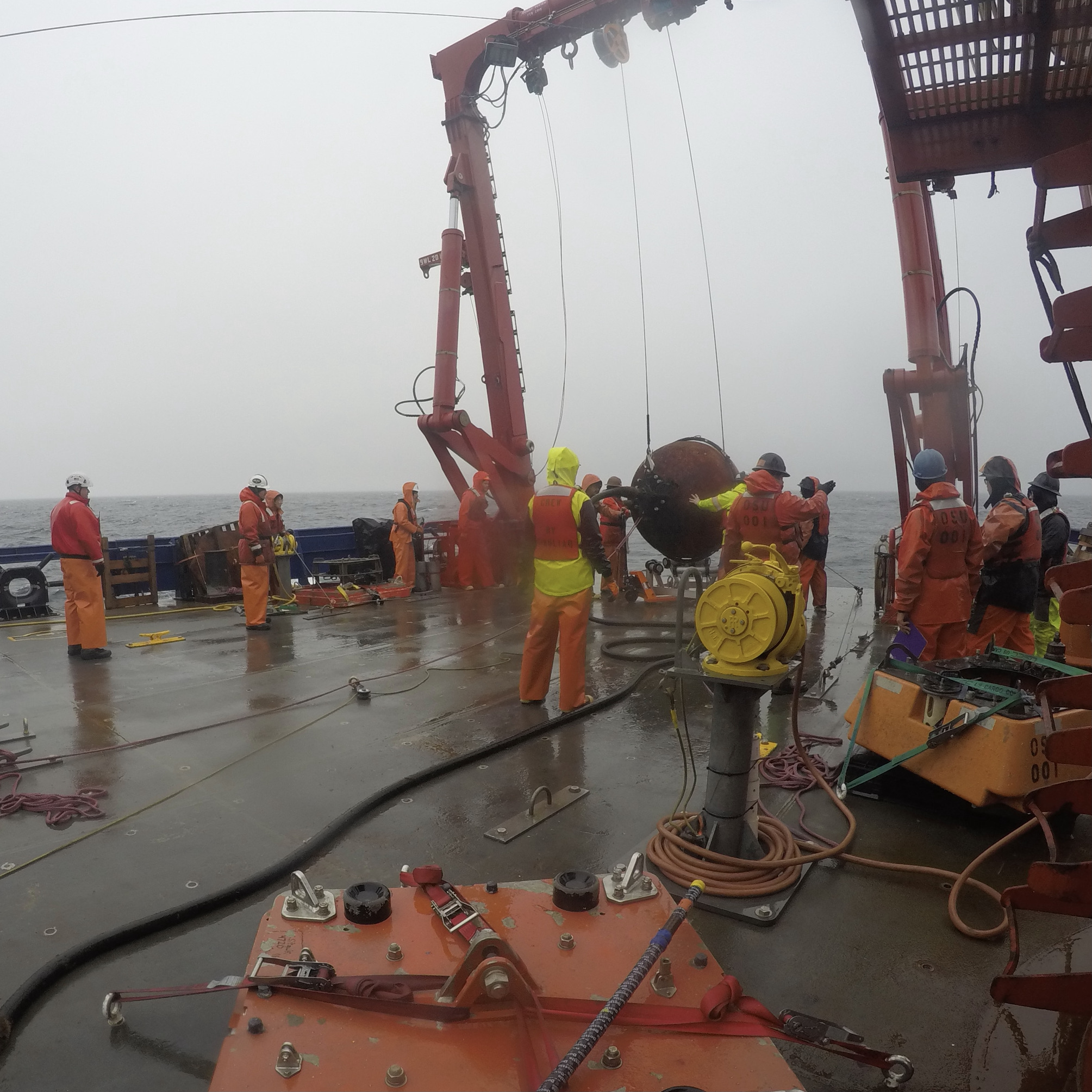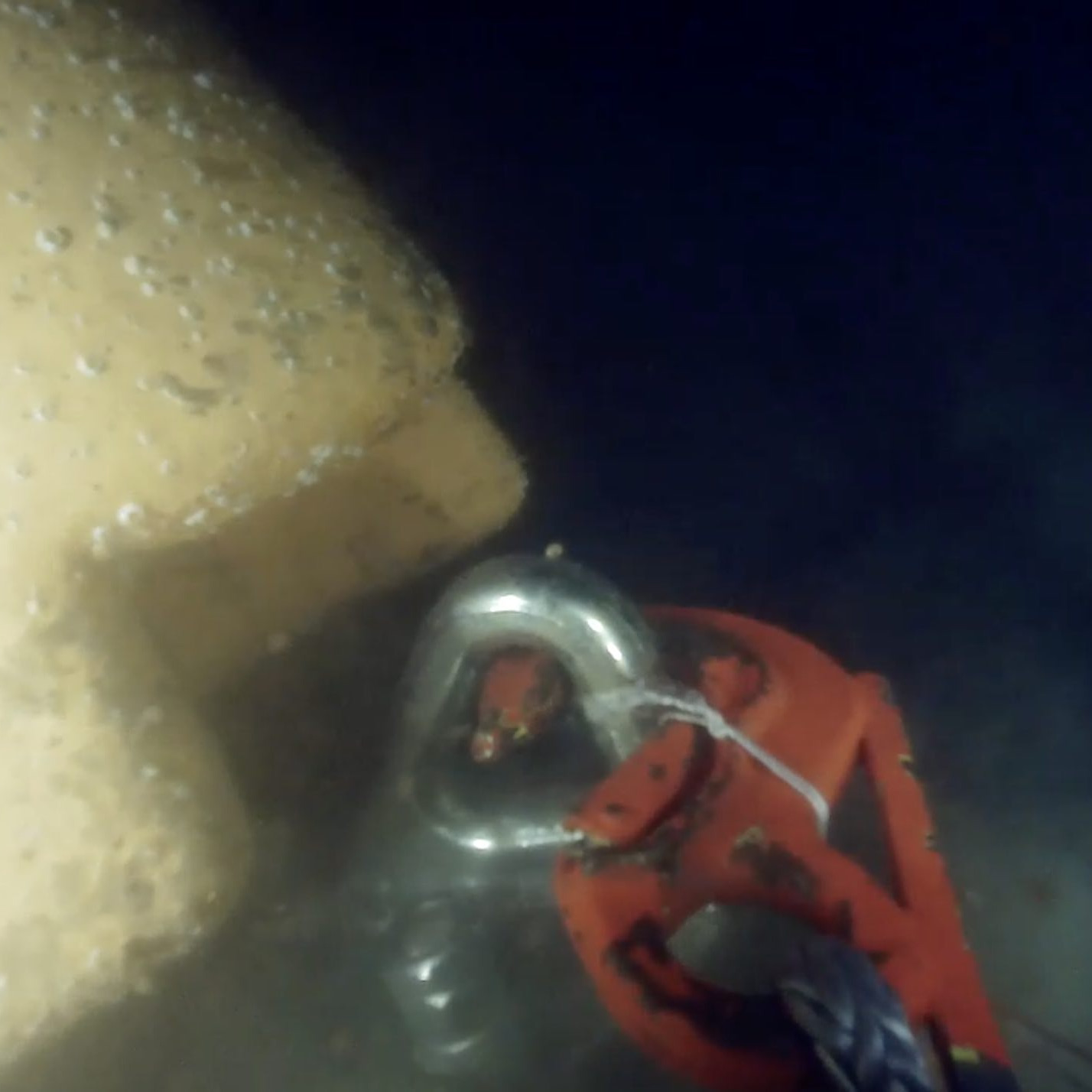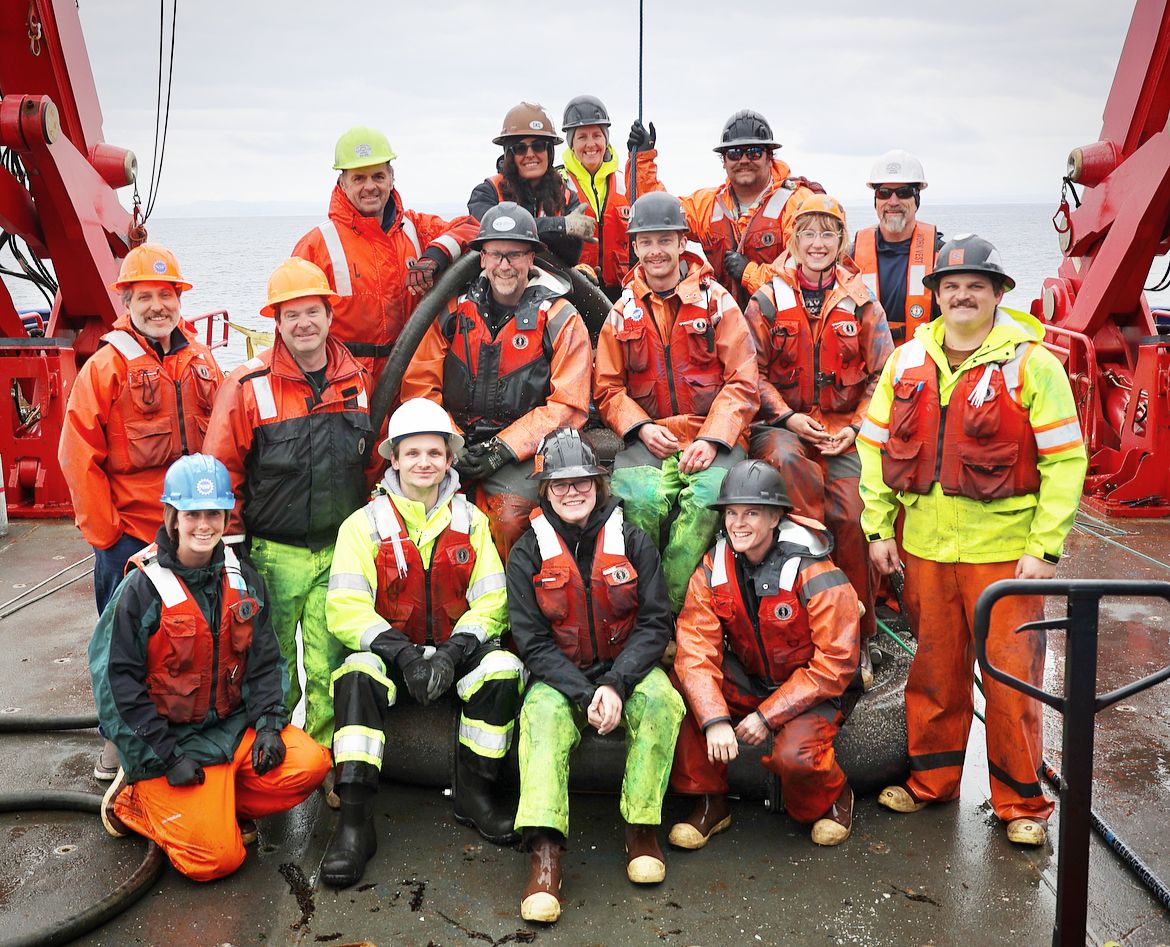Mission Accomplished Despite Weather
Thirteen days at sea. Two weather days. Wave heights that ranged from 2 – 12 ft, with most days somewhere around 7 foot waves. Winds from a pleasant 5 knots to days with up to 35 knots, with higher intermittent gusts. Except for two days when the sun shone, the weather was damp, cloudy, rainy, with an occasional wintery mix. Despite the conditions, the Endurance Team 18 accomplished its main mission objectives.
Much of the experience for those aboard the R/V Sikuliaq for the 18th turn of the Coastal Endurance Array focused on the weather, which presented operational challenges and less-than-ideal working conditions on some days with wintery conditions. Yet it was unseasonably mild for March. The team did a great job of taking advantage of good weather windows and, when needed, donned foul weather gear and kept at it for the duration of the expedition.

“I can’t say enough about the professionalism of our team, and the crew of the R/V Sikuliaq,” said Jonathan Fram, Chief Scientist for Endurance 18, and project manager for the Coastal Endurance Array. “We literally weathered storms together to ensure a timely recovery and deployment of the Coastal Endurance Array. Everyone worked safely, without complaint to get the job done. “
Every six months, the Endurance Array Team heads to sea off the coast of Washington and Oregon to recover ocean observing equipment that has been in the water reporting data. This time, the expedition happened earlier in the year, in late winter rather than in early spring. This timing could have been compounded this year by the atmospheric rivers on the west coast of the US, but luckily the associated storms stayed south of the Endurance Array.
Nonetheless, the Endurance 18 succeeded. They recovered and deployed seven moorings, recovered two gliders, and deployed four gliders on the array. The team also deployed a coastal surface piercing profiler. Working with a remotely operated vehicle, the team was able to locate and recover an anchor that was stuck on the bottom.

The expedition had a few non-weather-related novel components, as well. During leg two, University of South Carolina researcher Eric Tappa led the recovery and deployment of a sediment trap adjacent to OOI’s Oregon Slope Base site. This was the fourth time the sediment traps were deployed as part of Oregon State University Professor Jennifer Fehrenbacher’s and University of South Carolina Professor Claudia Benitez-Nelson’s work reconstructing ocean circulation, temperature, and chemistry in the past from sediment collected.
Each leg of the trip also had a new University-National Oceanographic Laboratory System (UNOLS) cruise volunteer and an OSU undergraduate, employed by OOI to help with the refurbishment of moorings, onboard. Such seagoing experience is invaluable to those deciding on future career paths. Listen to what UNOLS volunteer Olana Costa and OSU Undergraduate Athena Abramhamsen have to say about their experiences.
Last but not least, during leg two, OSU science videographer Kimberly Kenny recorded onboard work and shared her experiences in multiple videos and images that can be seen here and here.
“Regardless of conditions, there is nothing like being at sea with an energetic, committed group of colleagues,” said Fram. “Time at sea provides a unique opportunity to re-enforce the importance of our work to provide data to help better understand some of the changes taking place in the ocean.”

